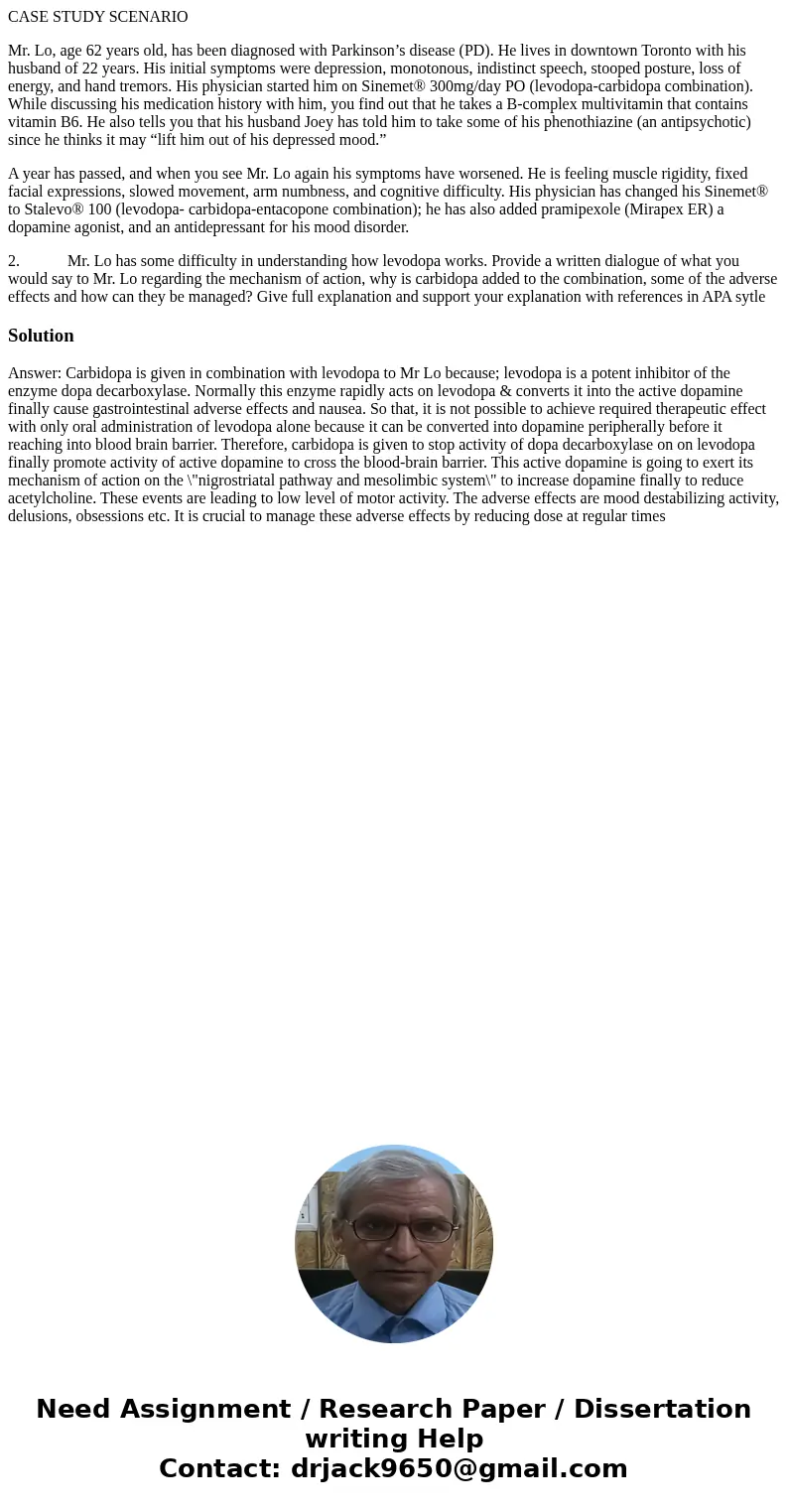CASE STUDY SCENARIO Mr Lo age 62 years old has been diagnose
CASE STUDY SCENARIO
Mr. Lo, age 62 years old, has been diagnosed with Parkinson’s disease (PD). He lives in downtown Toronto with his husband of 22 years. His initial symptoms were depression, monotonous, indistinct speech, stooped posture, loss of energy, and hand tremors. His physician started him on Sinemet® 300mg/day PO (levodopa-carbidopa combination). While discussing his medication history with him, you find out that he takes a B-complex multivitamin that contains vitamin B6. He also tells you that his husband Joey has told him to take some of his phenothiazine (an antipsychotic) since he thinks it may “lift him out of his depressed mood.”
A year has passed, and when you see Mr. Lo again his symptoms have worsened. He is feeling muscle rigidity, fixed facial expressions, slowed movement, arm numbness, and cognitive difficulty. His physician has changed his Sinemet® to Stalevo® 100 (levodopa- carbidopa-entacopone combination); he has also added pramipexole (Mirapex ER) a dopamine agonist, and an antidepressant for his mood disorder.
2. Mr. Lo has some difficulty in understanding how levodopa works. Provide a written dialogue of what you would say to Mr. Lo regarding the mechanism of action, why is carbidopa added to the combination, some of the adverse effects and how can they be managed? Give full explanation and support your explanation with references in APA sytle
Solution
Answer: Carbidopa is given in combination with levodopa to Mr Lo because; levodopa is a potent inhibitor of the enzyme dopa decarboxylase. Normally this enzyme rapidly acts on levodopa & converts it into the active dopamine finally cause gastrointestinal adverse effects and nausea. So that, it is not possible to achieve required therapeutic effect with only oral administration of levodopa alone because it can be converted into dopamine peripherally before it reaching into blood brain barrier. Therefore, carbidopa is given to stop activity of dopa decarboxylase on on levodopa finally promote activity of active dopamine to cross the blood-brain barrier. This active dopamine is going to exert its mechanism of action on the \"nigrostriatal pathway and mesolimbic system\" to increase dopamine finally to reduce acetylcholine. These events are leading to low level of motor activity. The adverse effects are mood destabilizing activity, delusions, obsessions etc. It is crucial to manage these adverse effects by reducing dose at regular times

 Homework Sourse
Homework Sourse